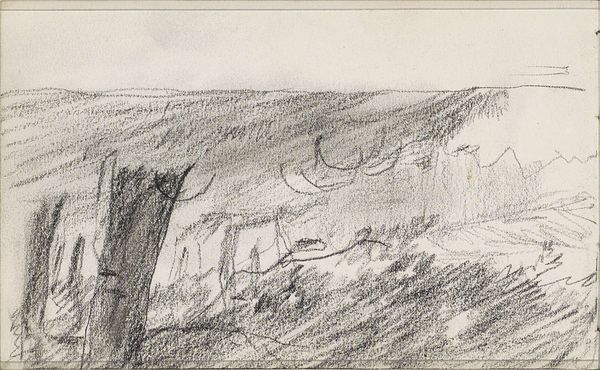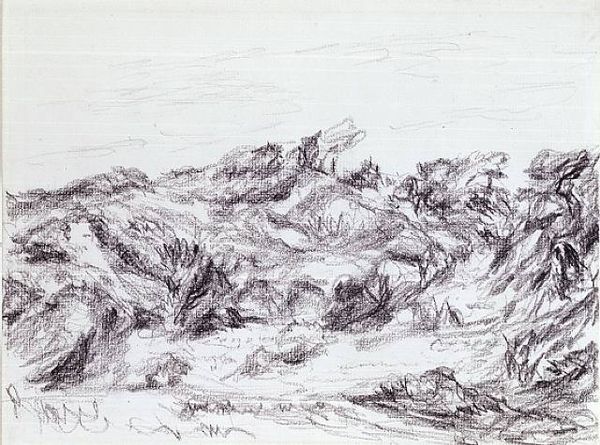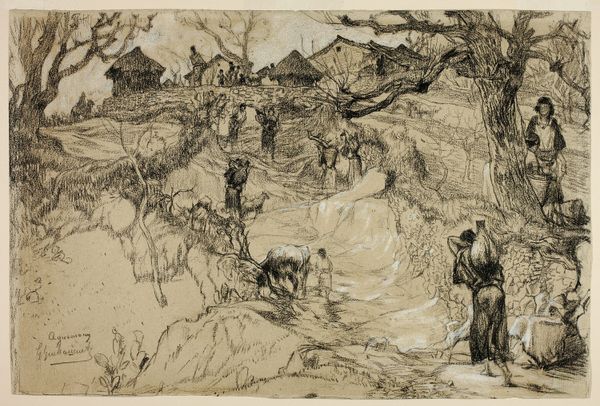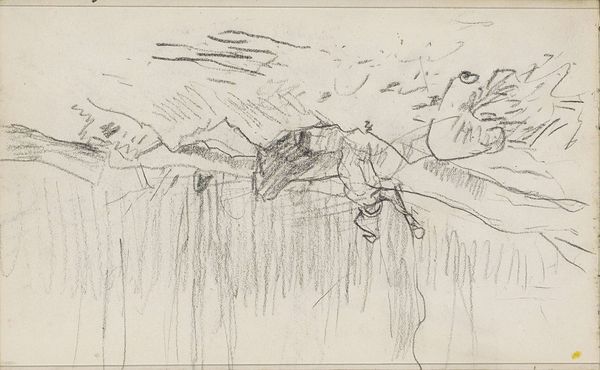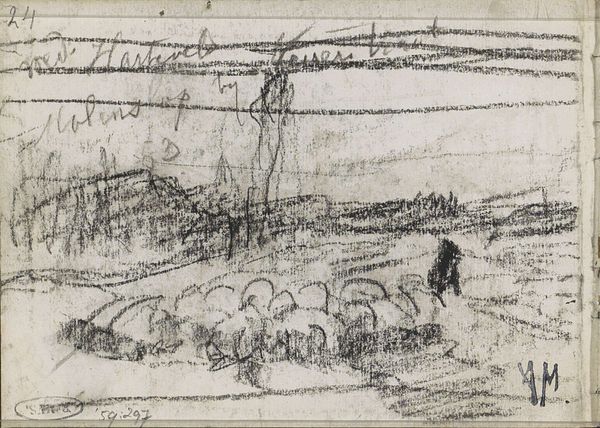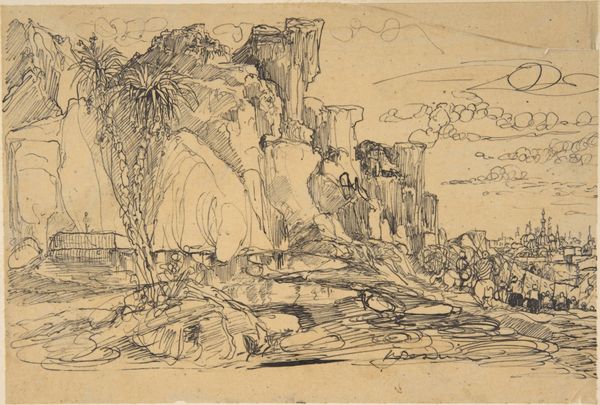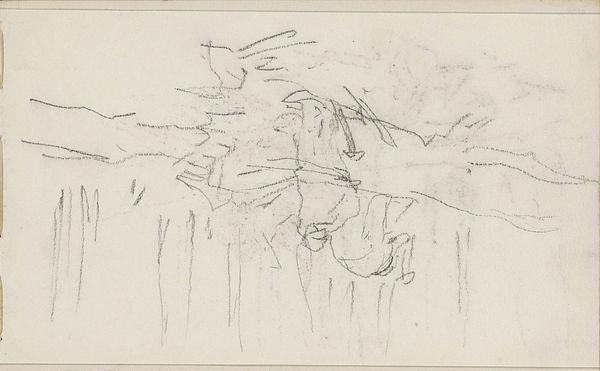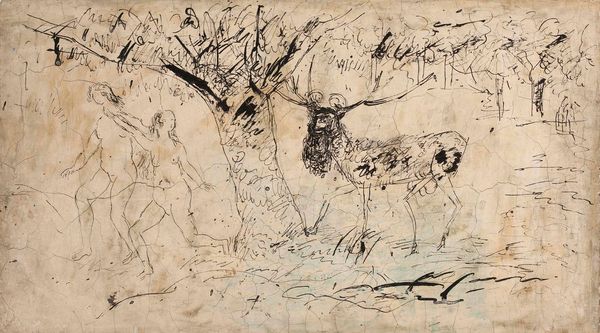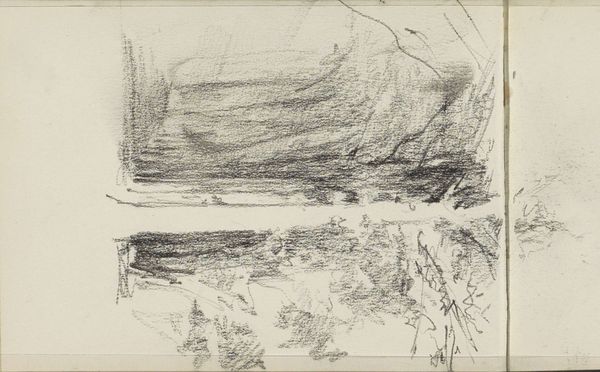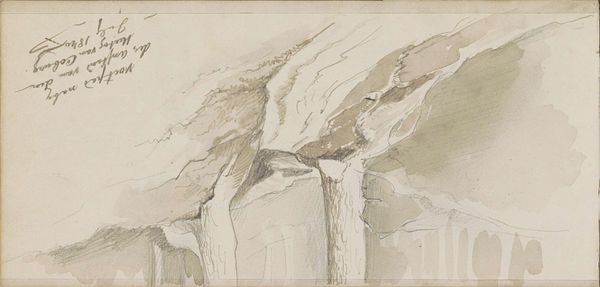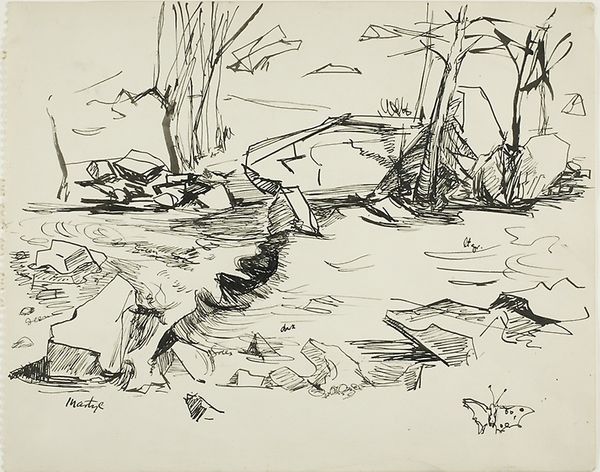
Dimensions: 153 mm (height) x 227 mm (width) (bladmaal)
Editor: Here we have Jean-François Millet’s "Major McColloch's Spring," made with pencil and watercolor around 1851. I’m immediately drawn to the frenetic energy and what seems like a very tense scene unfolding. How do you interpret this work? Curator: Looking at this, I see a depiction deeply entrenched in the romantic era's fascination with narratives of heroism and adventure. It's not just a landscape, it's a stage setting. How might the artist be commenting on power dynamics, on the representation of colonial narratives, and perhaps even the cost of westward expansion and its impact on indigenous populations? What feelings does the title of the piece evoke in you? Editor: It does make me wonder who Major McColloch was, and what this "spring" signifies in relation to his story. Perhaps a turning point? Curator: Precisely. Millet, consciously or unconsciously, engages with the grand narratives of his time. By immortalizing this spring, the landscape is inscribed with the name and story of Major McColloch, therefore creating both myth and reality. Is Millet merely romanticizing it, or does his style subtly offer a critique by emphasizing the chaotic dynamism of these figures against the muted colors of the cliff, creating a sense of unease or instability? Editor: I never considered the color palette as part of the narrative! I was caught up in the excitement, so I did miss a critical reading. Curator: The seeming spontaneity of the watercolor juxtaposed with the subject of colonial expansion brings forth questions concerning the complex interactions of aesthetics and ethics. Considering the historical moment, the way these figures are arranged evokes discussions of displacement and the imposition of Western narratives on pre-existing landscapes. Editor: This conversation really opened my eyes to the layers of meaning present beyond the surface of the artwork. It prompts deeper questions. Curator: Exactly! Thinking about how an artist uses visual language to participate in larger socio-political conversations expands our understanding of art’s role.
Comments
No comments
Be the first to comment and join the conversation on the ultimate creative platform.

